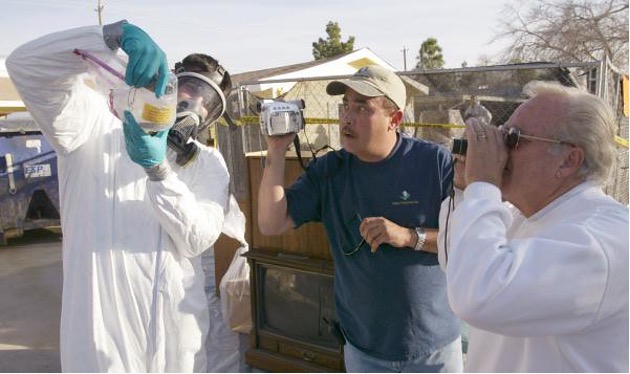The effects of chemical incidents and chemical exposures are not well understood by most, and as a result, are feared. A lack of knowledge about the subject makes it difficult for people to feel like they are in control. Together, these factors make a chemical emergency difficult to message. However, the public’s familiarity and perception of control can be enhanced through pre-incident education. In fact, communicating knowledge and key messages before an incident increases the likelihood that the public will heed messaging during an incident; this could mean that they will heed directives to shelter-in-place, protecting themselves from potential exposures rather than following their natural instinct to run from danger.
Preparedness messaging strategies that focus on action help the public feel more in control of an emergency, retain information, and make better informed decisions during an actual incident.
Cultivating pre-incident awareness within the general public is difficult. The public is often skeptical of preparedness messages; without an immediate need for the information, people may question why the campaign is happening in the first place – what do you know that I do not? Moreover, if the public associates chemical exposures with certain injury or death, their sense of futility, fatalism, and hopelessness severely diminishes their desire and their ability to absorb information and follow instructions. Preparedness messaging strategies that focus on action help the public feel more in control of an emergency and help them retain information and make better informed decisions about their safety and the safety of their loved ones during an actual chemical incident.
The public is more likely to embrace learning about protective actions for a chemical incident if they understand that these are often the same actions they take for more familiar emergencies. For example, if the community regularly prepares for tornadoes, they will be familiar with the sheltering during an emergency. If the community is used to preparing for severe weather events, they will be familiar with the need to maintain first aid kits, non-perishable food, and bottled water for multiple days. Grouping CBRN preparedness actions together for a more holistic approach to preparedness may be also useful; the public may envision integrated chemical, biological, radiological, and nuclear (CBRN) events as just “one more thing” to be prepared for.
Discussing specific concerns and questions with potentially impacted communities across population segments before an incident occurs will help communicators ensure their preparedness messaging strategies will meet the community’s needs. Brainstorming meetings or informal community meetings are good avenues to gain community input and insight into educational campaign development and will further build relationships and trust within the community. For example, since people with children are more receptive to public safety instructions about sheltering-in-place if they know that their children are being taken care of, preparedness campaigns should include discussions with parents about where and when they would be able to reunite with their children following a chemical incident.
In addition to transmitting chemical incident-specific knowledge, preparedness campaigns should encourage simple technology hygiene and preparedness emergency practices, like knowing when to use text messaging rather than phone calls, and when to turn off automatic downloading of images and videos when using data to retrieve social media feeds. These simple actions can prevent cell towers from being overloaded to the point that communications are lost during an incident.
Preparedness campaigns should also include education on the potential methods that emergency managers, public health officials, and responders will use to communicate with the public (e.g., cellular, radio, etc.) so that residents know where to quickly access public health and safety messages during an emergency. Campaigns should include education on local emergency notification platforms – including additional exposure to the Emergency Alert System – and understanding what emergency siren tones mean.
6.2.1. Embrace Teachable Moments
A teachable moment is a time at which learning a particular topic or idea becomes possible. A heightened awareness of chemical threats or emergencies stemming from international events, historical anniversaries, the release of periodic cleanup reports from past emergency sites, or news of a chemical emergency happening elsewhere may trigger a teachable moment in your community. In these moments, people consider how they would react or respond in a similar situation, for example, a local chemical incident. Generally, when people are feeling underprepared and are concerned by the gaps in their knowledge of how to protect themselves and their loved ones, they are more willing to listen to preparedness messages without being frightened by the messages themselves. As teachable moments are rare, unplanned, and fleeting opportunities, lasting for only a few days at most, it is critical that officials be ready to fill knowledge gaps with the release of pre-approved preparedness messages that teach the public how to respond following a chemical incident.



